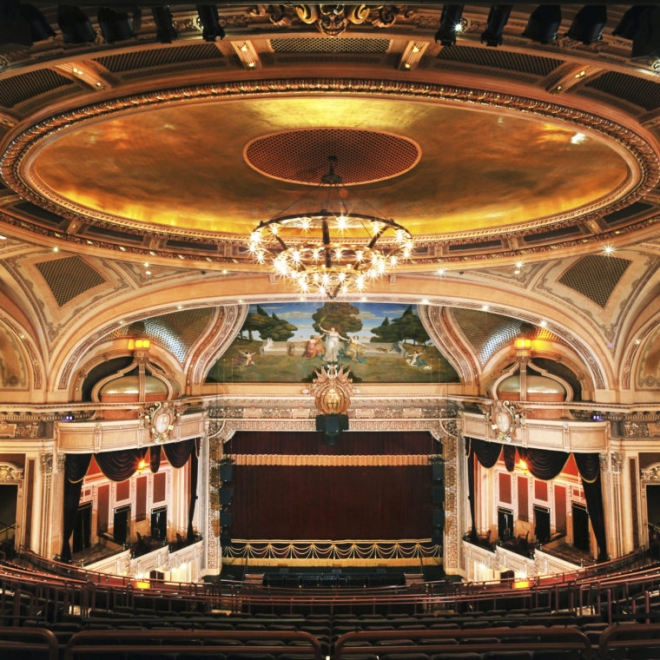Movie theaters are where our culture’s dreams and desires have been projected since the arrival of nickelodeons, providing an enchanting portal into a world where moviegoers could escape their everyday lives. Yet many historic theaters have not escaped the impact of social and technological change, nor the abandonment that has diminished our aging cities. Baltimore, thriving at the dawn of the cinema age, has been home to more than 240 theaters since its first Nickelodeon opened in 1905. Only a handful still function as theaters, but many survive in some form—ghosts on the gritty main streets of Charm City.
Movie Theaters as Material Culture
Flickering Treasures invites visitors to travel in time through a survey of Baltimore’s movie-going past from 1896 to the present, using photography, oral histories, architectural fragments, and theater ephemera to illuminate themes of memory, loss, and preservation. Throughout, photojournalist Amy Davis’ color photographs reflect a nuanced and humanistic approach. The combination of Davis’ contemporary views alongside archival images depict the rise and fall of an industrial metropolis, exposing the impact of social and economic upheaval on American cities, specifically Baltimore. Through the lens of theater design, construction, and use, the exhibition engages with a familiar architectural form that few may have considered in relation to urban history.
Movie Theaters as Architecture
The history of Baltimore’s theaters reflects a national story of how architects and entrepreneurs responded to the design challenge posed by a new form of public entertainment. Existing storefronts, repurposed as nickelodeons, were rapidly eclipsed by purpose-built theaters designed for a wide range of markets and audience types—from small-scale neighborhood houses to stunning downtown showpieces—reflecting a process that occurred in cities across America. As a case study, Baltimore is well-positioned to shed light on this history in that so many theater buildings are still standing, encompassing a wide variety of architectural types. Today, as cities embrace and experiment with new models of urban revitalization and downtown living, it is important to explore the vital ways in which theaters have historically contributed to the character and quality of our urban landscape.
Movie Theaters as Architecture
The history of Baltimore’s theaters reflects a national story of how architects and entrepreneurs responded to the design challenge posed by a new form of public entertainment. Existing storefronts, repurposed as nickelodeons, were rapidly eclipsed by purpose-built theaters designed for a wide range of markets and audience types—from small-scale neighborhood houses to stunning downtown showpieces—reflecting a process that occurred in cities across America. As a case study, Baltimore is well-positioned to shed light on this history in that so many theater buildings are still standing, encompassing a wide variety of architectural types. Today, as cities embrace and experiment with new models of urban revitalization and downtown living, it is important to explore the vital ways in which theaters have historically contributed to the character and quality of our urban landscape.

